What do Batman and Robin, Jagger and Richards, Butch and Sundance, and Simon and Garfunkel all have in common? It’s simple. They’re famous collaborators where the sum of their partnership is greater than the individual parts. And that same symbiotic energy is evident in fly fishing, where two flies that work together will consistently outproduce one fly on its own.
Choosing flies that complement each other is relatively easy. You need to pick patterns that have contrasting strengths and rig them to maximize their effectiveness together. The four key characteristics that you should pay particular attention to are:
SIZE: Is a fly large or small?
COLOR: Is a fly bright or dull?
STYLE: Is a fly realistic or impressionistic?
DENSITY: Is a fly weighted and, if so, how heavily?
The basic premise behind tandem fly rigs is that the first fly catches and focuses the fish’s attention and then the second fly closes the deal. Consequently, you’ll want to rig your flies so that the fish see the larger, brighter, more impressionistic fly first, and then follow the larger fly with a smaller, duller, more realistic imitation.
Nymphs
When you fish two nymphs together, choose a large, weighted fly like a rubber legs or a wooly bugger for your lead fly, and then follow it with a smaller, more realistic pattern.
Always make sure that your trailer mimics a common local food item like a midge, scud, caddis, stonefly, sowbug or mayfly.
Dry Files
If you’re prospecting with two dry flies, your front fly should be larger and more visible - think Trudes, Wulffs, Stimulators, Parachute Adams, etc. - while the trailer should be a smaller, more accurate imitation like a Sparkle Dun, an X-Caddis or a Clear Wing Spinner. Don’t worry if you have a hard time seeing your trailer fly. Keep your eye on the larger fly and set the hook if you see a rise within a foot or two.
Dry and Nymph Combinations
It can really pay to fish dry flies and nymphs together, but you have to choose a dry fly that buoyant enough to support your nymph without sinking. Since you probably won’t be able to see the fish take your nymph, treat your dry fly just like a strike indicator. If it disappears, set the hook.
Some tried and true dry fly/nymph tandems are:
- Parachute Adams and a Pheasant Tail nymph
- Elk Hair Caddis with a Serendipity
- Royal Wulff with a Prince nymph
- Hopper with a Bead Head Hare’s Ear





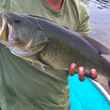

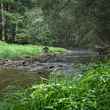



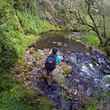
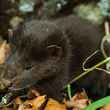



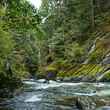




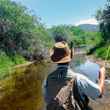
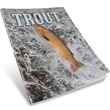



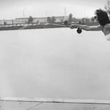
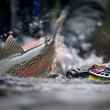


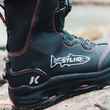
Comments
Keven replied on Permalink
I typically use a cone head Wooly bugger with a pheasant tail or similar nymph tied off the shank. Occasionally I run a float indicator to help see the strike.
Mike Lundrigan replied on Permalink
Don’t forget the two (or more) wet fly rig!! A buck tail/ Muddler on the tip with a buggy wet / soft hackle about 20-24 inches up off a dropper is a deadly system that has caught me thousands of trout and is my go to rig! Strip it in 2-3 foot pulls with a momentary pause between strips, skim the dropper at the surface and be ready! You will get some good strikes and sometimes two trout on your line at the same time! Now that is fun!
Pages